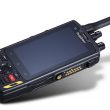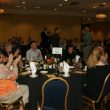Unlicensed microwave: Blessing or curse?
Engineering discipline and rigor should be applied to system planning and design to use unlicensed ISM band equipment to its best advantage.
Use of microwave radios designed for the unlicensed industrial, scientific, medical (ISM) bands is becoming more popular in the world of microwave engineering. Many types of spread-spectrum, broadband radios have recently become available for use in the 2.4GHz and 5.8GHz unlicensed ISM bands as defined by FCC Part 15. These products offer potential solutions to unique wireless access problems caused by the loss of licensed spectrum and spectrum refarming actions recently taken by the FCC – or any situation where a need exists for a rapidly installed, low-cost wireless link.
These cost-effective, unlicensed radios can be both a blessing and a curse, however. Their cost-effective broadband application and ability to operate without a licensed channel make them a blessing. These systems are easily installed and can use conventional 2GHz and 6GHz microwave dishes requiring only coaxial cable, instead of the more-expensive waveguide.
The lack of coordination among users in the unlicensed spectrum, however, makes it a curse. Although these new technology systems can be useful for providing solutions to unique system problems, they are not the cure-all for the future of fixed wireless that many believe them to be.
Interference in spread-spectrum systems The licensing and regulatory processes that protect the licensee eliminate many potential sources of interference in the licensed spectrum bands. In the unlicensed band, however, no interference protection exists, and the resolution of interference problems is pushed into the lap of the system owners, planners and engineers. Many system planners responsible for specifying and purchasing these systems have little understanding of how these systems actually work, and many have never been involved in designing fixed-site microwave systems. If this trend continues while the number of unlicensed systems increases, the unlicensed spectrum may become so noisy and unpredictable that many systems now working successfully today may become useless in the near future – especially in dense metropolitan areas.
Many of these unlicensed products are built with technologies based on one of two spread-spectrum designs: frequency-hopped spread spectrum (FHSS) and direct-sequence spread spectrum (DSSS). Both designs occupy a broad portion of the unlicensed spectrum. The difference between these spread-spectrum designs, however, is how they occupy that spectrum.
When unlicensed spectrum products were first introduced to the market, the initial buyers had the advantage – and luxury – of being first on the air, with few other spectrum users with which to contend. Many of these first systems used FHSS technology. FHSS radios transmit on a relatively narrow, instantaneous bandwidth while hopping several times a second between selected frequency assignments in a wide spectrum band. The FHSS receiver is synchronized to the transmitter’s frequency-hop pattern and follows it for complete signal reception. After many of these systems began occupying the same unlicensed band, it was soon discovered that similar FHSS systems would often interfere with one another, even with 128 (seven code bits) or 256 (eight code bits) programmable hop-code combinations.
This isn’t surprising considering the problem’s statistics. It’s easy to calculate the least number of FHSS systems having a better than even chance (p > 1/2) that any two of them will have the same hop pattern and interfere with one another. For n systems having m hop-code select bits, the following formula can be used to estimate the least number of users for a given interference probability:
For an even chance of interference, p 5 1/2, only 19 nearby FHSS systems would be required for any two of them to interfere using 256 codes (m 5 eight code bits), and only 13 nearby FHSS systems for any two to interfere using 128 codes (m 5 seven code bits). Although this estimate does not consider the use of directional antennas (or transmit power differences that may reduce the probability for this type of interference), it does illustrate the high potential for interference that exists with only a few neighboring systems, regardless of the number of hop codes available.
DSSS radios use more of the unlicensed spectrum in their transmission than FHSS radios. Using a code-division, multiple-access (CDMA) scheme, each DSSS radio’s baseband signal is “chipped” with a unique spreading code. Each of the spreading codes in CDMA DSSS are orthogonal, meaning that like codes add, and unlike codes cancel. When a correct code is received, the receiver’s matching de-spreading code provides signal gain, and the proper signal is detected. This orthogonal coding scheme reduces co-channel interference by providing a code isolation. This code isolation is a factor of the spreading gain (G) of the DSSS radio design. The spreading gain is the ratio of the spread bandwidth to the baseband data rate being carried by the radio. Low-data-rate, spread-spectrum systems have high gains with high code isolation. A high code isolation allows several radios to share a single spreading channel with low interference – a design principle used in PCS cellular systems. One of the risks with unlicensed DSSS radios is the tendency to push high data rates through the spread bandwidth. This may result in low spreading gains with low code isolation and a high risk of co-channel interference between DSSS systems.
One of the greatest concerns with using unlicensed radios is their lack of “noise immunity.” These systems are susceptible to interference even if designed as spread-spectrum radios. The following types of interference can affect many spread-spectrum systems:
– Narrowband interference (NBI) (receiving non-spread-spectrum signals within the spread bandwidth).
– Co-channel interference (CCH) (receiving on-channel signals with different codes that cannot be effectively canceled).
– Adjacent channel interference (ACI) (receiving signals from an adjacent channel).
– Intermodulation interference (IM) (receiving signals generated by the sums and/or differences of two or more out-of-channel signals that result in various frequency products within the radio’s channel band).
These various interference sources need to be considered (along with the radio’s spread-spectrum design parameters) during the system planning and engineering phase. This is especially important for systems using unlicensed spectrum products.
Carrier-to-interference ratio (CIR) Microwave system-link analysis considerations include:
– predicting path lengths, and potential obstructions and reflection points.
– estimating signal attenuation from transmitter to receiver to predict receive-signal levels (RSL).
– calculating the link’s fade margin, which is the ratio of RSL to receiver’s signal-threshold level.
– predicting the link’s availability.
Systems designers using unlicensed radios need to consider another important parameter – potential interference on each link. To plan this effectively, designers must optimize the carrier-to-interference ratio (CIR) of each microwave link in the system. Spread-spectrum systems operating in high-interference channels should have an optimal CIR ratio of at least 5:1, or 7dB.
Many unlicensed DSSS radios are engineered to carry large data rates with respect to their spreading band. As the baseband data rate approaches the spreading rate, the processing gains become low and significantly reduce the radio’s code isolation. In extreme cases, the radios may have less code isolation than the minimum required CIR (the 5:1 ratio noted above) and may become ineffective in distinguishing their intended signal’s code from other codes used by neighboring radios sharing the same channel. This becomes a significant system design issue for users of these unlicensed broadband DSSS radios.
If these CDMA DSSS radios cannot prevent co-channel interference between themselves, then the system needs to be designed with a channel plan and frequency-reuse strategy. Some manufacturers of these broadband systems only offer one or two radio channel pairs in their product lines, which can make channel planning quite a challenge. Therefore, in the design of an unlicensed radio system, the spreading gain and optimal CIR are important parameters for determining the threat of destructive interference from radios within the system, as well as other user’s systems in the same general area.
Optimizing link CIR The best approach for reducing the potential for interference is to ensure that the overall system CIR budget is optimized by making it as large as possible for each link. Consider following these steps early in the design phase:
(c) Only use radios that offer two or more channel pairs – The more channel pairs that are available, the less the chance of CCH interference in the system. Ideally, adjacent, crossing or in-line paths should all be separated from one another by a frequency guard band.
(c) Calculate the code isolation for the DSSS radios being considered (10 3 log(G)) – This will establish whether the radios can actually have an effective code isolation within the same band. Ideally, code isolation should be greater than the radio’s minimum CIR ratio.
(c) Consider the number of code choices available in the radio – More code choices add flexibility to channel planning and an increased system tolerance to the large number of potential interfering systems in the same metropolitan area.
(c) Obtain the unlicensed receiver’s front-end filter roll off characteristics (dB isolation per MHz from center carrier) – This system parameter determines the receiver’s ability to reject ACI and IM products.
(c) Calculate the RSL from the link budget for the signal of interest (SOI) – This is the signal you want to receive. Also calculate any potential interfering signals (NBI, CCH, ACI, and IM sources – the signals you don’t want to receive). The difference (in dB) between the SOI RSL and the sum of all the noise RSLs will establish the CIR estimate for each link in the system.
(c) Consider alternating-link feed-horn polarities – Ideally the interfering signal would be orthogonally polarized (90ø) with respect to the signal of interest. This is an important consideration but needs to be well understood. Signal reflections may change a linearly polarized signal to elliptical or circular polarity. Reflections, especially over water, are often manifested as a varying amplitude and phase interference signal. Orthogonal, linear cross-polarization schemes have signal-to-interference isolations as high as 30dB, but with the variations due to reflections, this isolation is significantly reduced. Therefore, it is best to use a more conservative estimate and to assume a circular-to-linear polarity isolation of only 6dB.
Organizing technical users The new unlicensed radio systems have provided users with a number of system options that did not exist before. However, more engineering discipline and rigor need to be applied to system planning and design with unlicensed systems than ever was realized with licensed systems. Users of unlicensed systems should consider forming a technical users group made up of the unlicensed product users in their local areas. This group could help regulate the local unlicensed spectrum, help resolve interference issues and prevent their spectrum from becoming unusable in the future. This user group could also help assist in future system planning as member systems grow. Increased use of these unlicensed bands has pushed a new set of planning and engineering responsibilities into the lap of many telecommunications directors nationwide.












